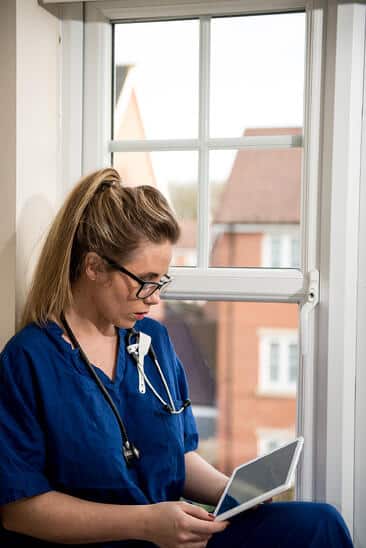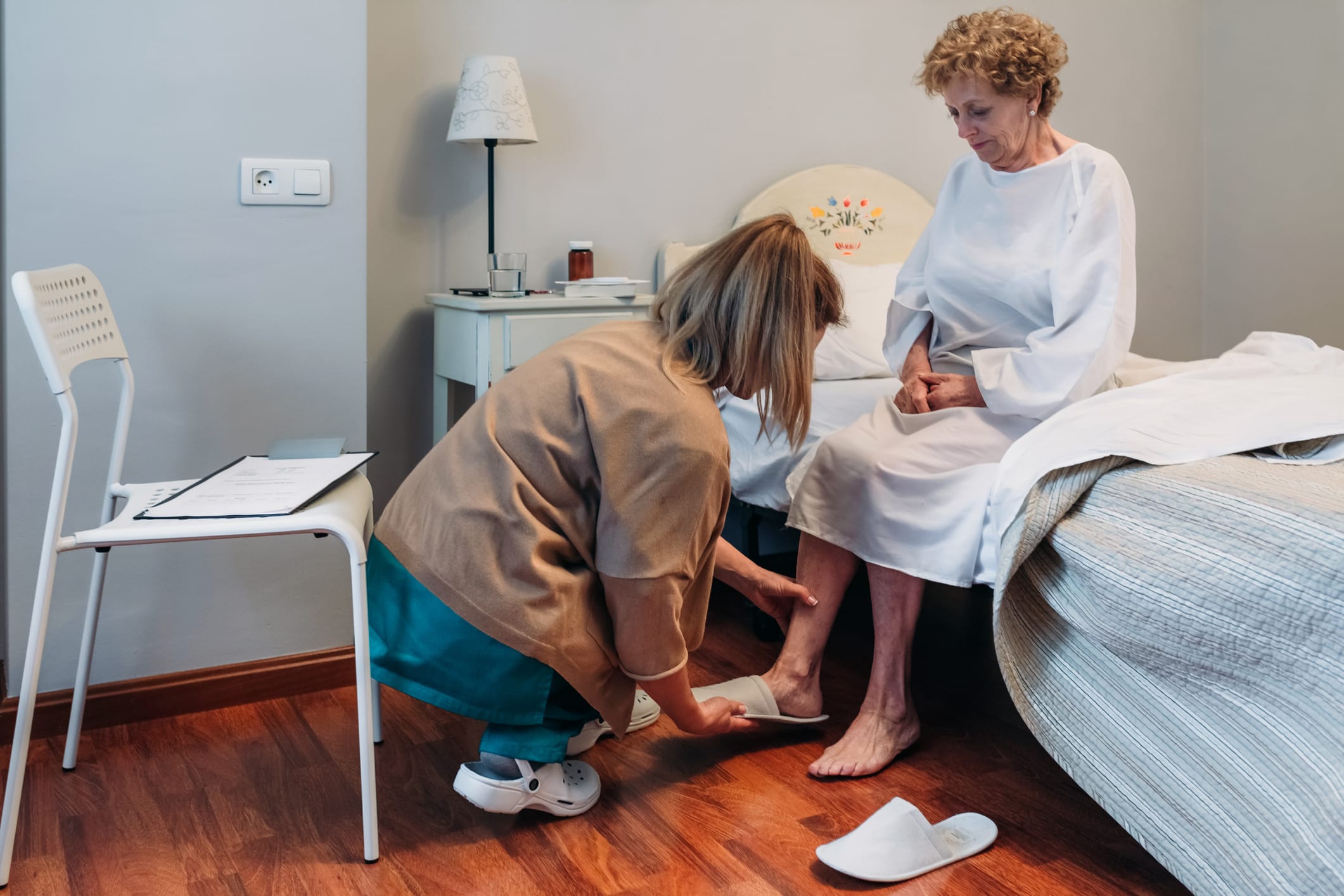
Mobile Caregiver App:
THE KEY TO Improved CAREGIVER EXPERIENCE
Table of Contents
Attending to the Caregiver Experience
Attending to the Caregiver Experience
Caregivers around the globe face demanding client schedules that by all accounts are not going to let up any time soon, given the many factors that are fuelling the unprecedented growth rate for home care of nearly nine per cent each year.
Labour shortages are an ongoing concern in an industry that is historically known for low wages, high turnover, and often challenging work environments. As a result, attending to the caregiver experience is imperative now for agencies, who must ensure the best possible quality of life for their staff members in order to retain top talent.
Quality of life involves many factors, yet optimized schedules that meet the needs of both caregivers and clients are important attraction and retention tools. Minimizing travel time and ensuring consistent hours to achieve a stable income have become paramount to keeping staff happy and, in turn, ensuring quality client care.
Technology has become an important variable in the ability to optimize schedules, particularly when it comes to mobile apps. Let’s take a look at exactly how a caregiver’s time utilization can vary sharply with and without the use of a mobile app.
A Day in the Life of a Caregiver
Meet Caregiver “Ingrid Peterson”
Ingrid is a pseudo 29-year-old caregiver who works for a home care agency with a client base that covers a large district in southwestern Ontario. She calls her agency at 6:30 a.m. to get that day’s schedule, which includes visits to regular clients as well as a new client she is caring for in her colleague’s absence.
Ingrid drives to her first appointment, her regular client Emily, whose severe arthritis typically means she needs help getting out of bed, bathing and dressing. The drive takes about half an hour, and once Ingrid arrives, she finds out the appointment has been cancelled because Emily’s son wound up arriving early for a long weekend visit.

Now time for visit #2, Ingrid is back in her car and off to see a new client she is caring for today, whom she has never met. Audrey is in her mid-50s with COPD who requires oxygen therapy and medication. Ingrid arrives and finds a large dog barking at the door, which makes her nervous. The dog is wary of Ingrid and it takes Ingrid several minutes to help calm him down and properly introduce herself to Audrey.
Ingrid is there not only to help with oxygen and other medical needs but to do some housework and provide companionship. Before she begins active time with Audrey, however, Ingrid searches for Audrey’s care plan to give her some additional insight into Audrey’s needs. She can’t find it in her binder right away, so she spends time asking Audrey to try and get more information. Audrey is frustrated by having to repeat information to different care workers and is in some cases unable to remember certain details that would have helped Ingrid.
Prior to Ingrid leaving, she spends more time completing paperwork before getting in her car for her last appointment of the day. This time it’s to visit Jack, a gentleman in his 70s who has specific needs when it comes to his recent diagnosis of chronic heart failure. When she arrives, Ingrid spends time assessing his vital signs and is concerned that Jack’s blood pressure is low. He seems lethargic and he’s not able to articulate how long he’s been feeling this way, so she decides he should be transported to hospital.
Her shift over and worried about Jack, Ingrid fills out her timesheets and drives to the office to drop of all of her paperwork before finally heading home for the day.
Introducing a Mobile Caregiver App
Ingrid’s Agency Onboards a New Home Care Software
Now let’s take a look at what Ingrid’s day looks like once her agency implements an all-in-one home care software solution that includes a mobile app for caregivers.
Ingrid logs into her app to view her schedule for the day. Her schedule overview gives her complete visibility into where and when she’s expected to be at a client’s home, in addition to estimated travel time. With GPS and route optimization, she knows she’ll be able to get to each home the most efficient way possible, and the back office has been able to ensure her schedule entails no back-and-forth trips across the county.
Before she leaves for her first appointment of the day with June, she receives a real-time alert that the visit has been cancelled, saving her an unnecessary trip to the client’s home.
Since Ingrid’s morning shift was cancelled, her schedule now shows her as “available” to her colleague Susan, a care coordinator at her home care agency. Through the employee finder feature in the back office, Ingrid was flagged as a match for another shift that needed to be filled within close proximity. Susan sent a Ingrid a shift offer, which came through on her mobile app. If Ingrid had wanted more hours, she could have accepted an additional shift in real-time, however with the extra time she decides to prepare for her second visit, with Audrey.

Upon arrival, Ingrid clocks-in to her visit with the push of a button, ensuring compliance that she is where she says she is through electronic visit verification. In real-time, Ingrid inputs all her notes into the app is able to ensure everything is compliant to Audrey’s care plan through the visit reports and tasks assigned to the visit. Even though Audrey lives in a remote area with intermittent online access, Ingrid knows that all of her information will be saved and will upload once her device reconnects to the network.
Before the final visit of the day, Ingrid reviews the notes on her app for her client, Jack, before ringing the doorbell. Because Jack uses remote patient monitoring, she’s able to easily see all of his vital signs before the visit even begins. Before she leaves Audrey’s house, she gets an alert that Jack’s blood pressure is starting fall outside of normal and is able to confer live with other members of his care team to decide the best course of action to take.
